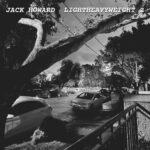When Your Time Is At Hand
Mark Seymour Human Frailty era interview.
Author: Andrew Watt, Beat.
Date: 25 September 1986.
Original URL: N/A
From their origins as “the definitive art rock image band” to their current status as one of Australia’s most authoritative rock and roll group, Hunters & Collectors have constantly been lauded by both the rock press and live audiences.
With their most recent album, “Human Frailty”, the Hunters were able to translate this critical and grass roots respect into significant record sales.
As Andrew Watt found out in a recent conversation with Mark Seymour, the process was not so much one of walking that thin line between accessibility and selling out: rather that the band simply did what came naturally.
Much like Mark Seymour’s mode of conversation….
“We wanted to make a record that would translate the live following we had into some sort of media profile. We wanted to have some sort of profile rather than just being a pub band. By the end of 1985 we’d established a pretty widespread following in all the capitals, but it hadn’t really been reflected in record sales.
“Part of the problem was to do with our attitude to things in the studio and I suppose, not taking the whole thing as seriously as we should have.
“I think it’s a natural progression. If you put on consistently good shows and have a certain standard of production that you hold to, if you’re in this country long enough, eventually it translates in terms of popularity. That’s the one beauty of touring in this country – it can affect the commercial market whereas in other countries it can’t.”
Thus Mark Seymour explains the development of Hunters & Collectors, whose 1986 album, “Human Frailty” achieved for the band the difficult crossover from inner city credibility to commercial acceptance.
After spending a number of years, and albums, as the almost constant darlings of “fringe” audiences in Melbourne, “Human Frailty”, with its direct and most basic songs and arrangements, struck a chord in suburbia, a fact that Mark Seymour finds in no way undesirable. To Seymour there’s nothing particularly precious about cult appeal.
“Yeah, it’s come the full cycle I guess,” he said. “The thing I find curious about the inner city fringe that adopt fashions and bands like a change in the weather is that they all seem to be one step behind what the general public is into.
“I was always under the impression that my peers in the inner city were the ones who were setting the pace; the ones who were defining style, whereas now I think the ones who are defining style are out in the suburbs.
“You always find that people who have an intellectual approach to art and music are the ones who latch onto things for all the wrong reasons.”
So there was no concern about that audience possibly regarding “Human Frailty” as a concession to the marketplace?
“Not exactly! By the time we came around to making that record, that was an irrelevant consideration. We had a strong enough live following around the country to allow us to feel that we didn’t have to justify the record.
“We just decided that what we were saying was so basic and commonplace that that’s the way it should be done, regardless of what our peers say. They’ve all come around to it.”
As Seymour points out, the commercial success of Hunters & Collectors is made notable, or in his word “stigmatised”, simply because of their lack of similar success previously, and the fact that they endured this as a band for a long period. In the eyes of some fans and a few critics, nothing exceeds like success.
However, for some bands the artistic expectations of their early fans have created a mental stylistic barrier which has prevented the band from creating music which has potential for wider appeal.
Even for Hunters, a band noted for singlemindedness and repulsion of outside influences, this problem did arise. Again, with the benefit of experience, Seymour is able to put it into perspective.
“It has been a burden in a way, but we’ve always maintained that what we do is serious and we do it for our own reasons. We don’t think of the market first and the music second. We’ve always been taken on that level, which is good.
“The whole notion of artistic credibility as an expression is incredibly vague and it doesn’t define very much. At one stage we were duped into believing what the trendies were saying about us which really was hocus pocus.”
“Human Frailty” is a remarkable album driven by a powerful, concise and imaginative rhythm section, augmented by the distinctive brass sound and featuring Seymour’s often anguished, occasionally brutal, always emotive vocals. Hunters & Collectors are one of the most physical live acts in this country and this aggression is evident on this album.
It’s an album that deals with issues of intense relationships and their destruction and the sexual politics that are inherent in such events. Seymour’s songs, written mainly in 1985, reflect a highly emotional year of his life and this comes as no surprise. Listening to “Human Frailty”, one realises that Seymour could not be singing about anything but a first-hand experience, or at least observations.
“Through my personal problems in 1985, I came to realise that there are just so many hang-ups and misconceptions about sexual roles. “Human Frailty” was about the immediate issues, but I tried to show that I realised the wider implications of those issues. It became an album about sexual politics because these issues couldn’t be divorced from those aspects.
“Throughout 1985 I was constantly told that heterosexual men had all this guilt to bear about the ways of the world. Half of the population of the world was being absolved of all blame because of their sex.
“I just couldn’t believe it and I was angry about it. Then I was told that anger was bad and aggression was bad. It was a very frustrating time for me and I suppose that comes out in the songs.”
The songs on “Human Frailty” are disarmingly honest and direct; rather than hinting at an idea through use of metaphor or some other vocabularic device the songs state it boldly and bluntly, exposing Seymour’s convictions and, well, frailties.
It is the definitive statement of Seymour’s current attitude that there’s nothing clever about being evasive.
“I’ve got a lot of inspiration from ‘Blood on the Tracks’ by Bob Dylan, because those songs were incredibly close to home. ‘Human Frailty’ wasn’t the first record to have very direct lyrics; it’s just not something that people do.
“It’s not easy to do, I wouldn’t try to write like that constantly or else it comes out sounding really stilted. If you’re going to write a love song, you should really know what you are writing about because it’s such a prosaic subject.
“I’ve tried to write in a style that’s incredibly minimal, in terms of numbers of syllables in words, and state things as clearly as possible, whether it be something personal or political. It wasn’t until recently that I started thinking that I did have a style and I’ve tried to keep things skeletal.”
For a crop of songs written a year ago about a very intense and current period of his life, Seymour is still able to perform them with a lot of conviction. Is this difficult to do?
“The songs take on a life of their own and if you can see that people are realising the emotional significance of what you are singing, you really feel it yourself. That’s why a song like ‘Throw Your Arms Around Me’ is so powerful. It doesn’t lose that feeling over time.”
Whilst ‘Human Frailty’ is about to be released in America through the prestigious IRS label, Hunters & Collectors are already planning their next album. There are already three songs written and, according to Seymour, a thematic direction is already emerging in general terms.
“It’s about our history and our experiences and attitudes as they’ve been shaped by growing up in Australia. Beyond that, it’s difficult to say. We’re planning a long way ahead for the next album. We tend to write songs as a gradual process and we think about these themes as things happen to us as a band, depending on what emotional pressures are on us.
“We don’t have a fanatic line in our music, we don’t write about a particular thing and keep on about it. As much as we don’t have a particular lyrical image either. We’ve got a fairly open attitude about what it’s possible to write a song about.”
Whilst on the topic of image, Hunters & Collectors are seen as being at either end of the image scale. Some see the band as the ultimate bunch of regular guys, blue singlets and flannelette shirts denoting nothing more than their inherent normality, whereas others regard this same appearance as being a highly powerful and evocative image in itself. In other words, they suggest that the band has adopted normality as a striking media persona.
Mark Seymour: “It’s not just an image that we adopted overnight. It’s something that we just fell into because we tried to avoid being the definitive ‘art-rock image’ band that we were when we started. There was no other band around like us. We were wearing tails and dinner suits way before anyone else.
“We’ve done all that and realised what crap it is and that it was a complete sham. It was like when we divested ourselves of that and there was nothing else we could put on except what was underneath. Sure, that’s an image, but in the general scheme of things it’s a fairly uncomplicated one.”
Thankyou to Stephen for typing out this article for us all to enjoy!





